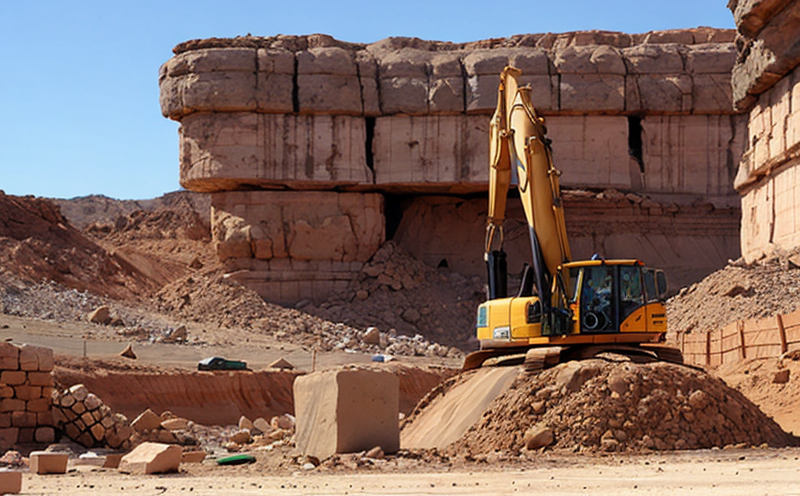EN 14579 Determination of Sound Speed in Stone
The European Standard EN 14579 provides a method to determine the sound velocity in rock materials, which is essential for understanding their mechanical properties. This test is particularly important in mining and quarrying operations where accurate assessments are crucial for safety, efficiency, and compliance with international standards.
Sound velocity testing involves measuring the time it takes for an elastic wave to travel through a sample of stone under specified conditions. The primary purpose is to evaluate the mechanical characteristics that influence the behavior of rock materials in mining environments. This process helps in predicting how rocks will respond to stresses during excavation, blasting, and transportation.
The method described in EN 14579 ensures consistent and reliable results across different laboratories by standardizing the procedure. The sound velocity measurement is a non-destructive test that can be performed on various types of rock samples, including aggregates used in concrete production or raw materials for construction projects.
Accurate determination of sound velocity aids in selecting appropriate blasting methods, optimizing excavation plans, and assessing the stability of underground structures. It also supports structural design by providing data necessary for estimating the strength and durability of stone-based products.
The process involves preparing a cylindrical specimen of uniform diameter and length, ensuring it is free from defects that could affect sound wave propagation. The specimen is then placed in a suitable testing apparatus designed to apply controlled pressure and measure the travel time of ultrasonic waves through its cross-section.
Standardization ensures that all laboratories performing this test adhere to the same protocols, which enhances comparability of results across different locations and organizations. Compliance with EN 14579 is mandatory for companies involved in large-scale mining operations or those exporting stone products to European markets.
The sound velocity measurement serves as a key indicator of rock quality, influencing decisions related to material selection, processing methods, and end-product specifications. It plays a vital role in ensuring safety during extraction processes while promoting sustainable practices by optimizing resource utilization.
By employing this standardized testing procedure, mining companies can enhance their operational efficiency, reduce costs associated with poor-quality materials, and meet stringent regulatory requirements set forth by various authorities worldwide.
Frequently Asked Questions
Benefits
- Enhances operational efficiency by providing accurate data on rock quality.
- Reduces costs associated with poor-quality materials through optimized resource utilization.
- Promotes sustainable practices by ensuring the best use of available resources.
- Increases safety during extraction processes by predicting stone behavior under stress.
- Simplifies material selection and processing methods, leading to improved product quality.
- Supports regulatory compliance with international standards for exported products.
Industry Applications
EN 14579 sound velocity testing finds extensive application in the mining sector. It is particularly useful for:
- Evaluating blasting effectiveness and optimizing excavation plans.
- Predicting rock behavior under stress to enhance structural design.
- Selecting appropriate materials for construction projects based on their mechanical properties.
- Ensuring compliance with international standards when exporting stone products.
The results from this test are invaluable in maintaining high standards of safety and quality across the industry, making it an essential tool for professionals involved in mining operations worldwide.
At Eurolab, we offer comprehensive services tailored to meet your specific needs. Our expertise lies in providing accurate, reliable, and consistent test results that comply with EN 14579 standards. Here are some of the advantages you can expect:
- State-of-the-art equipment ensuring precise measurements.
- Experienced technicians who understand both the theoretical and practical aspects of sound velocity testing.
- A clean, controlled environment that minimizes external factors affecting test outcomes.
- Detailed reporting with comprehensive data analysis to support informed decision-making.
We pride ourselves on delivering exceptional service and support throughout every stage of your project. Contact us today to learn more about our EN 14579 sound velocity testing capabilities.





